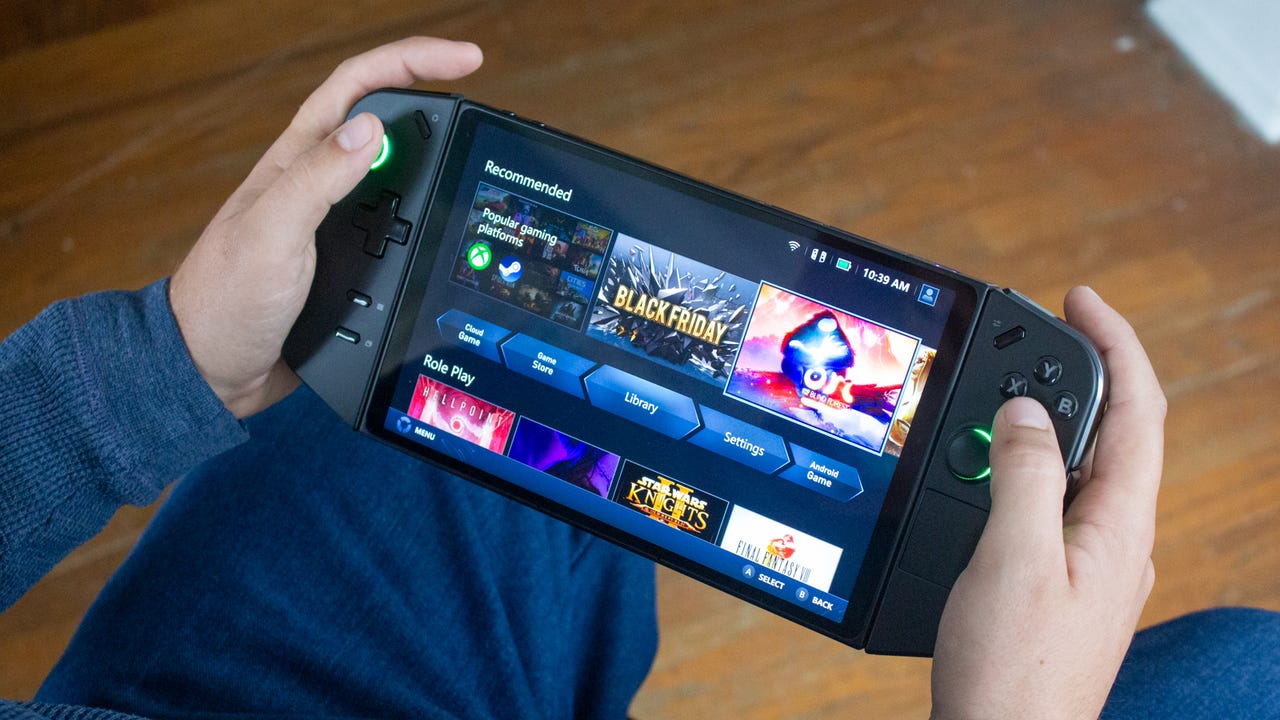'ZDNET Recommends': What exactly does it mean?
ZDNET's recommendations are based on many hours of testing, research, and comparison shopping. We gather data from the best available sources, including vendor and retailer listings as well as other relevant and independent reviews sites. And we pore over customer reviews to find out what matters to real people who already own and use the products and services we’re assessing.
When you click through from our site to a retailer and buy a product or service, we may earn affiliate commissions. This helps support our work, but does not affect what we cover or how, and it does not affect the price you pay. Neither ZDNET nor the author are compensated for these independent reviews. Indeed, we follow strict guidelines that ensure our editorial content is never influenced by advertisers.
ZDNET's editorial team writes on behalf of you, our reader. Our goal is to deliver the most accurate information and the most knowledgeable advice possible in order to help you make smarter buying decisions on tech gear and a wide array of products and services. Our editors thoroughly review and fact-check every article to ensure that our content meets the highest standards. If we have made an error or published misleading information, we will correct or clarify the article. If you see inaccuracies in our content, please report the mistake via this form.
Lenovo's $700 Legion Go has the right idea, but we'd recommend these alternatives instead

ZDNET's key takeaways
- The Legion Go is Lenovo's first handheld gaming/PC console, retailing for $699 with an AMD Ryzen Z1 Extreme chip and 16GB of RAM.
- It's a very interesting device with all the gamer-centric features you could want. You can also browse the web like a traditional computer.
- That being said, Lenovo has some bugs and software patching to do, so I'd recommend a competing handheld before it.
The Legion Go, Lenovo's first portable handheld gaming system, is as much of a Steam Deck or Nintendo Switch competitor as it is a Windows 11 tablet with gaming controllers and a fan strapped to it.
Also: Valve's Steam Deck turned this 40-year-old dad into a gamer again
Compared to other handheld gaming consoles, the Legion Go makes a good attempt at being the all-in-one device you might want. But therein lies the device's biggest question: do people actually want the full Windows experience on a device like this?
View at AmazonDuring my briefing with Lenovo, it was quickly brought up that the Legion Go ran full-on Windows 11, which means you can bypass the custom Legion Space experience and use it like a miniature laptop. There's full support for Bluetooth keyboards (because, of course, there is), and you can use one of the controllers as a mouse. When you're done, the device morphs back into a Steam Deck alternative, complete with access to many of your favorite games.
That's all well and good, but you don't get a device like this if it isn't hacked together a bit. A lot of custom software had to be built to support all the weird hardware stuff Lenovo wanted to include, and on top of that, the tablet itself is forced to be thick and heavy since it needs powerful specs and a fan to keep it cool.
Of course, the Legion Go can deliver on its main purpose: gaming. Turn the device on, log in, and you'll be greeted by Legion Space. It's Lenovo's custom software experience for accessing your game libraries, downloading new titles, and managing your device's settings. It's a very simplistic UI that tries its best to emulate the custom experience of something like SteamOS, but in the form of a Windows app.
Also: Gaming gifts: What do you get for the gamer who has everything?
The 3.3GHz AMD Ryzen Z1 Extreme processor and Radeon graphics offer solid performance for most games. I'm not a huge gamer myself, but the titles I tried (including Madden and Call of the Wild: The Angler) ran very smoothly. The best part of the experience was the display: at 8.8 inches, it's the largest display you'll find on one of these portable gaming consoles, but it makes every game you play feel more immersive. It also helps that it boasts a 2560x1600 resolution, a 144Hz refresh rate, and up to 500 nits of brightness.
During my usage, the Legion Go would get pretty warm, but the fan would crank up and cool things off when necessary. Lenovo's custom liquid crystal polymer 79-blade fan, which it calls its "Coldfront thermal technology," seemed to do its job just fine.
I also enjoyed the TrueStrike controllers (shown above) that Lenovo includes, which happen to be pretty souped-up for optimal gaming performance. Detach the controllers (like the Nintendo Switch), flick open the kickstand on the back of the Legion Go, and you've got yourself a neat tabletop gaming setup on the go.
There's also a switch that lets you use the right controller for first-person shooter games: just slot it into the included magnetic base and use the laser on the bottom to move the cursor around, reposition yourself in games, and more. It's a great feature to have not just for FPS games, but navigating Windows as well; the trackpad on the right controller is nice, but nowhere near as comfortable as moving the controller around like a mouse.
Of course, this thing runs full Windows 11, so you can ignore all the gaming aspects, connect a keyboard, and start using it as a miniature laptop replacement. I did just that, and the experience was totally fine. Turn the Legion Go on for the first time and you'd think you just bought a new computer. You have to go through the entire Windows 11 setup experience, which involves connecting your Microsoft account and dealing with all the Office prompts.
Also: The 12 Windows apps I keep (and the 11 I dump) on every new install
Microsoft has done a decent job at making Windows a bit more touch-friendly over the years, but let's be honest, it's Windows -- you're supposed to use a mouse and keyboard to control it.
Granted, you also don't want to do work on an 8.8-inch screen for very long so you'll start to feel cramped quickly, but for typing out some emails or editing a quick photo in Lightroom (yes, I installed Lightroom on this thing and it ran perfectly fine), you can get away with it.
Because this is Windows, and Windows sees software like Lenovo's Legion Space hub as just another full-screen app, not the core system UI, when signing into my Steam or Epic Games account, I was often bombarded with pop-up windows asking me to go to the internet and download the launchers first. This is all happening while relying on the right controller for your mouse and the on-screen keyboard (which wouldn't pop up 60 percent of the time when tapping on text boxes).
During my usage, the Legion Go's 49.2WHr would only last two to four hours on a full charge (similar to the Windows-powered Asus ROG Ally), and that's not even with the highest resolution or framerates enabled during gaming.
Also: This Lenovo laptop makes a case for using gaming hardware at work
Did I mention that this thing is huge? It's much bigger than the Nintendo Switch or Steam Deck mostly due to the big screen but also because there's a huge fan that adds weight and thickness. That, in turn, makes the controllers thick and clunky, with the entire package weighing just under two pounds.
ZDNET's buying advice
Lenovo built a very interesting take on the handheld gaming console with the Legion Go. While it's not perfect, it's a decent first swing at a Steam Deck alternative. I hope Lenovo can make it a little thinner, lighter, and give it better battery life with the second version. Oh, and it'd be nice if they could clean up the software situation.
For those who want a safer, more stable experience, I'd also recommend the Asus ROG Ally and Steam Deck OLED. While the Steam Deck is far from being bug-free, it has a longer battery life and a simpler approach to software that makes it a more straightforward gaming console. Meanwhile, the ROG Ally --which also runs on Windows 11 -- has a more comfortable form factor and speedy performance. Both devices feel more finished than the Legion Go does, which has so many ways to use it that everything kind of gets lost in the shuffle.
As long as you keep its many quirks and issues in mind, the Legion Go is a very fun toy to tinker with. If you can appreciate a weird $700 chunk of hardware -- and you happen to game a little bit more than me -- you'll enjoy messing around with this thing. If you'd rather have a portable console that just works right out of the box, go for something like the Steam Deck or ROG Ally, or a more traditional gaming laptop.
